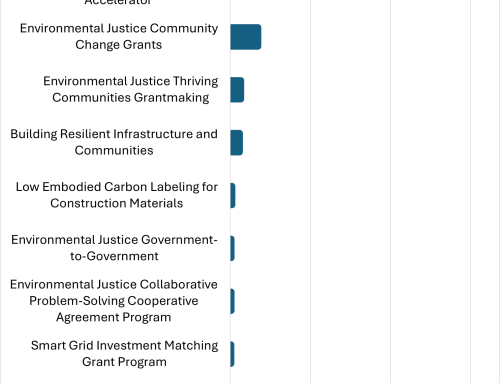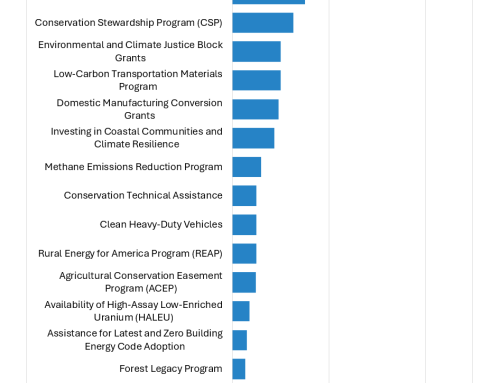
In this month’s Spotlight, we will breakdown some of the climate linked training and workforce development programs established under the Infrastructure Investment and Jobs Act (IIJA) and the Inflation Reduction Act (IRA). Together, the sections summarized below have a total of $1.8 billion in funding dedicated to workforce (as well as other programs that will have workforce and training implications).
These programs will be critical in ensuring that the workforce is able to access support to deliver on the enormous potential of the two Acts. Indeed, a Brookings piece found that attendees of a recent workforce event for the Infrastructure Investment and Jobs Act, “identified “challenges around training and education” as their top concern about the infrastructure workforce”. You can find other workforce materials in our Resource Library here.
Check out our Dashboard to learn more about these programs.
IIJA Programs
Section 40211 – 21st Century Energy Workforce Advisory Board
Establishes a 21st Century Energy Workforce Advisory Board to develop a strategy for the Department of Energy (DOE) in the support and development of a skilled energy workforce. The Board shall consist of 10-15 members. The Board shall develop a plan to support and retain displaced and unemployed energy sector workers. This section prioritizes education and job training for underrepresented groups (racial and ethnic minorities, Indian Tribes, women, veterans, and socioeconomic disadvantaged individuals).
Section 40503 – Energy Auditor Training
Directs the DOE, under the State Energy Program, to establish a program to provide grants to states for workforce training to perform energy audits. There is $40 million available for this section.
Section 40512 – Building, Training, and Assessment Centers
Directs the DOE to provide grants to institutions of higher education to establish building training and assessment centers to train the building sector workforce (engineers, architects, building energy permitting and enforcement officials, and building technicians) and conduct research and development for alternative fuels. Up to $10 million in funding is available for this section.
Section 40513 – Career Skills Training
Directs the DOE to award grants to nonprofit partnerships that offer career skills training programs. Grants will cover up to 50 percent of the cost of career skills training programs under which students concurrently receive classroom instruction and on-the-job training to obtain an industry-related certification to install energy-efficient buildings technologies. There is $10 million available for this section.
Section 40553 – Survey, Analysis, and Report on Employment and Demographics in the Energy, Energy Efficiency, and Motor Vehicle Sectors of the United States
Establishes the Energy Jobs Council in the DOE to conduct an annual report on employment in the power, energy efficiency, and motor vehicle sectors by technology and fuel type.
IRA Programs
Section 50123 – State-Based Home Energy Efficiency Contractor Training Program
Appropriates $200 million for states to develop and provide training programs for contractors working on home energy efficiency and electrification improvements, including those under the HOMES rebate program.
Section 50223 – National Park Service Employees
Appropriates $500 million through FY2030 to hire employees to serve in units of the National Park System or national historic or national scenic trails administered by the National Park Service.
Section 60101 – Clean Heavy-Duty Vehicles
Makes available awards totaling $1 billion for workforce development and training to support the maintenance, charging, fueling, and operation of zero-emission vehicles (ZEVs).
Section 70005 – Office of Management and Budget Oversight
Appropriates $25 million to the Office of Management and Budget through September 30, 2026, to oversee implementation of the Inflation Reduction Act and to track labor, equity, and environmental standards and performance.


